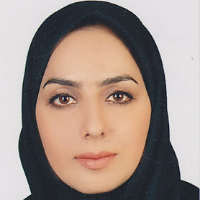The Usage of Commissive Speech Act in the Qur’an
One of the remarkable aspects of the holy Qur’an is the use of diverse linguistic methods to convey a particular idea. This study aims to evaluate the commissive act in the Qur’an using Searle's speech act theory, a theory useful in comprehending deeper semantic levels of holy scriptures. The study used a descriptive-analytical method, and the data were analyzed through a qualitative analysis of statistical results to answer the following questions: What linguistic forms does the Qur’an use to represent commissive speech acts? And what themes or topics are included in these commissive speech acts' utterances? First, employing a desk research approach, the Qur’anic verses containing the commissive speech acts were selected based on syntactic, lexical, and semantic criteria. The distinguishing characteristics of each case were then identified, including the discursive structure of the act, the committed person, and the theme of the commitment. Finally, the relationship between the linguistic form and the theme of the speech acts was examined. The findings reveal that the Qur’an expresses commissive speech acts through four linguistic structures: oath, promise (al-wa‘d), threat (al-wa‘īd), and pledge; each includes divine and non-divine conceptions, and each has a unique characteristic. The quantitative comparison of these four shows that “promise” is the most commonly cited sub-speech act, distinguishing it from other linguistic forms. “Threat”, “oath”, and “pledge” are the other most frequently cited sub-speech acts.Moreover, the evaluation of the speech agents and their status as aspects of the situational context reveals that the speech participants are not equal in terms of position and power, which is a decisive factor in the selection of linguistic forms. In all of these cases, the language structures and their intricacies, particularly modality (modal marking), illustrate the relationship between the linguistics style and power dynamics between the participants. The focus of the themes, domain, and frequency differ throughout the four categories mentioned above, with some overlap in certain instances.
- حق عضویت دریافتی صرف حمایت از نشریات عضو و نگهداری، تکمیل و توسعه مگیران میشود.
- پرداخت حق اشتراک و دانلود مقالات اجازه بازنشر آن در سایر رسانههای چاپی و دیجیتال را به کاربر نمیدهد.


